What Is Cashmere And Why Is It So Expensive?
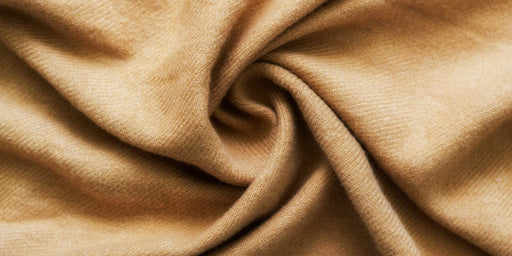
Knowing more about how a textile like cashmere came to be associated with luxury can help deepen your appreciation for your own cashmere garments and help you know what to look for when purchasing new ones. Many factors impact the quality and the price of cashmere wool, so it's important to understand what goes into making a superior product in order to pick the best pieces for the right price. Caring for cashmere requires effort and thought, but is worth it to protect the value and quality of your investment pieces.
Historical Origins of Cashmere Wool
The earliest uses of cashmere wool can be traced back to the Kashmir Valley, a stretch of land nestled between the Pir Panjal Range and the Great Himalayas in the Indian subcontinent. While textual references to shawls made of cashmere wool appear as far back as the 3rd century BC, historical context places the popularity of cashmere as a common textile for many different types of clothing beginning somewhere in the 14th century AD.
Although many different breeds of goat grow a downy undercoat that can be spun into wool, true cashmere wool comes from a particularly fine-haired breed known as Capra aegagrus hircus, or the Hircus Blythi Goat. They may also be referred to by their Persian and Urdu-inspired name, the pashmina goat. Cashmere wool may even be sold as pashmina wool since the terms are considered interchangeable in many regions.
Nowadays, this breed of goat can be found in a variety of regions across the globe. Many believe that the unique climate and terrain of the Kashmir Valley and surrounding areas of Nepal and Mongolia result in a finer, softer down from the pashmina goats raised in that environment. Cashmere wool that originates from this area of the world is often prized as the best for making clothes like sweaters, shawls and soft, sturdy thermal pieces like hats and gloves.
The Process Behind Manufacturing Cashmere Wool
Gathering
Gathering wool from the pashmina goat to be spun in cashmere yarn is a time-sensitive and tedious process. Goats grow the double fleece that produces the downy undercoat and coarser guard hairs during the winter to help insulate them against the drop in temperatures. Once spring comes around, they begin to molt, or shed, this fleece. For goats in the Northern Hemisphere, this can begin as early as March, but it can be as late as May before the undercoat is ready to shed.
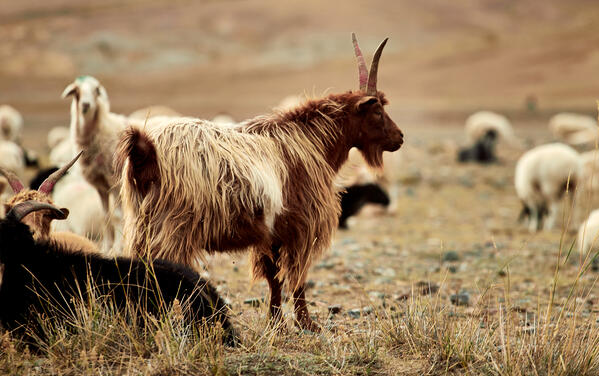
To this day, the traditional approach of hand-combing the fleece to release both the down and guard hairs is still favored for the superior yield it produces of pure cashmere wool. Hand-combing a goat can take as long as two weeks to remove the down from its undercoat. Any remaining guard hairs must be removed from the collected down so that the yarn that's spun from the wool is as soft and supple as possible.
Shearing the goats results in faster production speeds, but it can render a coarser yarn due to the higher ratio of guard hair to down in the final product. This still holds value in the luxury textile market as the garments made from this yarn still retain the benefits of being lightweight to wear and well-insulated against cold temperatures.
Refining
Before it can be dyed, spun and woven into garments, cashmere wool must be cleaned. This removes the remnants of dirt and debris, as well as strips the raw fibre of excess animal oils. At this point in the manufacturing process, it's common to let industrial machinery do the hard work rather than washing, dyeing and carding by hand.
Once the raw fibers are clean, they're often dyed in large batches of a select number of highly saturated, vibrant colors. Depending on the desired result, different batches of these richly dyed fibers may be sent through a blending process together so that the manufacturer achieves a variety of yarn colors without the need to dye each bolt a specific hue. This allows for faster production while maintaining flexibility in the spectrum of colors a manufacturer can yield.
The fluffy clumps of dyed and blended raw cashmere wool are then run through a multi-step process that webs it together into thin, flossy sheets that are then turned into spools of a rough approximation of yarn. This intermediate stage is referred to as slubbing. To the untrained eye, it would look very much like finished yarn, but in actuality it's a very weak bond between the fibers that could be easily pulled apart.
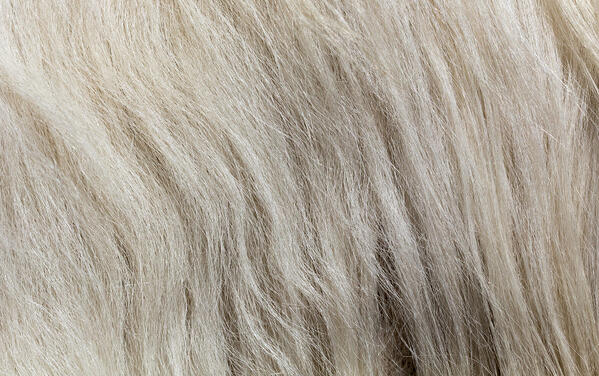
Spinning
The spinning mules are the true workhorses of the wool manufacturer's arsenal. These machines handle multiple spools of cashmere slubbing at once, rapidly turning out yarn of varying thickness so that it can be wound onto cones for a final quality check. It's at this point that it truly becomes cashmere wool yarn, ready for weaving into a multitude of luxury items.
As with the refining and spinning process, industrial looms do most of the work in weaving many of the cashmere garments on the market now, even for the most boutique clothiers. Scarves and shawls are still frequently made by hand and therefore coveted for their unique character and intricate designs. For items like sweaters and jackets or small pieces like hats, socks and gloves, it's far easier to produce them in larger quantities by working with modern machinery than traditional hand-woven practices.
The Fashionable Rise of Luxury Cashmere Garments
Although the beauty and utility of cashmere clothing had long enjoyed a lofty position in the fashions of the east, the explosion of commercial trading routes between Asia and Europe in the 18th century opened up a new opportunity for cashmere to be made and sold as a luxury textile for the fashion elite. As with many fashion-forward movements of the time, this special consideration began with French aristocracy.
At first, famed French wool manufacturer, William-Louis Ternaux, merely tried to imitate Indian cashmere shawls by making them out of cheaper and more accessible merino wool from Spain. However, with the help of the French government at the time, Ternaux was able to secure a voyage to Persia and acquire a herd of the pashmina breed of goat to bring back to France. This began a slow but steady adaptation of cashmere wool as a popular and pricey textile throughout Europe and eventually into North America.

In fact, it was such a successful transition that European wool manufacturers made major contributions to the innovation that makes producing and dyeing cashmere in new and exciting hues possible to this day. Now, regional production quality in places like Italy and Scotland are heralded as top-of-the-line and priced accordingly.
Cashmere remains a staple of modern fashion trends, and although many garments made from cashmere wool are lightweight enough to be worn all year round in many regions, it still tends to be favored most for seasonal wear during colder months. And, though it still shows up in luxury collections and certain pieces can carry an impressive price tag, cashmere is no longer reserved for the fashion elite of our time.
However, not all cashmere is made equal, and while expensive asking prices don't always indicate better quality, it's still true that pure cashmere and exemplary manufacturing practices will cost more than cheaper blends made en masse.
Understanding the Cost of Cashmere
As you can see, there are numerous ways in which the environment, manufacturing and production of cashmere from its natural to consumer-ready state can add to the value of any given piece of clothing. It goes without saying that the more care that's taken in each step of the long process from raw to refined, the more justified it becomes to charge a premium for the result.
Most clothing retailers, large and small, will only handle a portion of that process themselves. They may be haute couture design houses who send their patterns off to master weavers who fashion their pieces by hand, or they may combine design and production all at once under the umbrella of a larger clothing company's name. In most cases, it's rare to find one retailer who helms the process from goat to garment as one entity.
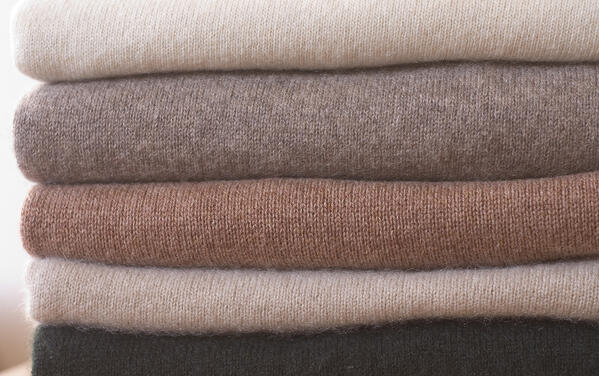
It's more common for the process to be a connection between goat herders who send raw cashmere wool to dye houses who then spin cashmere slubbing into proper yarn that is then sold off to textile manufacturers who produce commissioned designs for final sale. Any shortcuts or compromises made along the way can impact the quality and the cost of the garment you're considering on the rack.
That's why raw cashmere wool that's been hand-combed from goats grown in the Kashmir Valley, processed and prepared in European wool factories, then handcrafted into beautiful haute couture designs by world-famous fashion houses tend cost the most. They're more than worth the investment and are destined to become heirloom pieces to be handed down from one generation to the next.
Finding a cashmere sweater at a bargain price doesn't mean you're getting bottom-of-the-barrel quality, though. If what you're looking for is 100% pure cashmere wool, you can find it at affordable prices. The goats that produced the wool may have been raised in a different region, or the manufacturer may have benefited from producing large quantities of the same design rather than keeping their production to a small batch. None of these detract from the actual benefits inherent in quality cashmere, they just lack some of the speciality that truly sets premium cashmere apart in the eyes of the purist.
It's important to know that certain standards for calling cashmere pure or not may be lacking in some parts of the world, so even if the retailer advertises it as 100% pure, it may not actually meet that definition according to regulations elsewhere. As an example, here's what the U.S. Wool Products Labelling Act of 1939 established as the standards to be met for labelling clothing that contains cashmere:
- It must be wool from the de haired undercoat of the cashmere goat (the Capra hircus langier)
- The wool product cannot exceed 19 microns in diameter on average
- No more than 3% of the wool product, by weight, can measure more than 30 microns in diameter
Rules like this aren't exactly easy to test when you're standing in front of a shop sign, wondering if the price advertised is a good match for the garment beneath it. Not many of us could break out a measuring instrument and scale to compare average diameters by weight even if we wanted to. While none of them are foolproof hacks, there are some clever tricks you can use to get the best guess for cashmere quality while you're browsing around.
Determining the Quality of Cashmere
Touch
Cashmere is soft, sometimes unbelievably soft, but there's such as a thing as too soft if a manufacturer is trying to hide a coarse blend in a yarn whose wool wasn't thoroughly de-haired before production. Some manufacturers will use additives that condition the yarn and give it a slick feel. The type of soft you're looking for should have a plushness to it rather than a slippery glide across the hand.
Color
Cashmere wool is notoriously stubborn and dye-resistant. This doesn't mean that all pastel, muted cashmere clothes are automatically inferior to their more richly saturated cousins, but those jewel-tone hues are often the result of only the most skilled dye houses. So too are intricate patterns and detailed embroidery work. Each added feature means more time and effort went into making that piece of clothing, which isn't going to be as likely with cheaper cashmere blends.
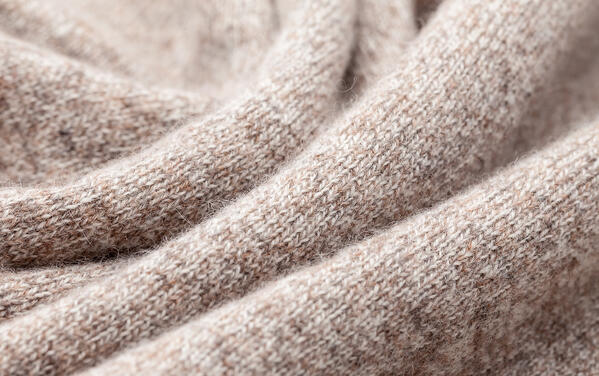
Thickness
Some manufacturers will promise pure cashmere for a bargain price, and then save on costs by producing a thin, loosely woven garment. A cashmere cardigan shouldn't be so thin it might as well be sheer, and the same goes for socks, which stand to break down with even a little wear the thinner they are.
Sheen
Natural fibers like cashmere wool will have a corresponding sheen to them, but in the case of cashmere, it should still be rather muted. If the fabric is very reflective and shiny, there's a chance it's been woven with other types of textiles. This may be intentional as this can provide certain benefits like durability and elasticity, which is what allows some cashmere garments to be machine-washed instead of hand-washed or dry-cleaned, but the care label should reflect that reality clearly.
Origin
While the country of origin isn't always indicative of quality, it can be an important factor when taken into consideration with other clues. Mass-produced garments from China can vary greatly in terms of quality even when they're made with properly sourced cashmere wool. As the largest producer of raw cashmere, however, Chinese manufacturers have the ability to source some of the best cashmere wool for more affordable prices than manufacturers in other parts of the world. Your best bet is to purchase from retailers you trust are sourcing their materials ethically and with an eye for quality.
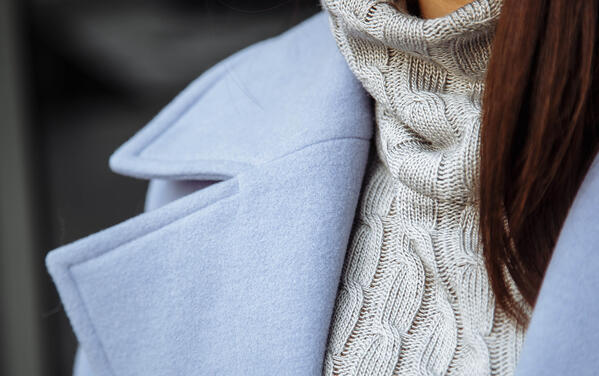
Preserving the Value of a Cashmere Garment
Whether you're spending $30 or $300 on a piece of cashmere clothing, you'll want to make sure you're getting the most for your money. That ultimately comes down to how you care for the cashmere and how you store it when not in use.
Cashmere is a finicky fiber that can easily lose its shape or fall prey to Clothes Moths who love to snack on its natural fiber and the habit that wool has of clinging to body oils and proteins. The seasonal nature of cashmere clothing means it may be more vulnerable to clothes moth infestation than other pieces of your winter wardrobe. Moths thrive in the dark recesses of long-term storage, so be sure to bring out your cashmere for the occasional once-over and light airing out when not in use. Putting effective Clothes Moth traps in place greatly helps in eliminating them. Find out more about our odor-free Clothes Moth traps for your closet here.
A thorough cleaning is also necessary before you plan to tuck it away for a few weeks or months. Although many care labels will insist you dry-clean only, it is safe, and sometimes preferred, to hand-wash cashmere garments and allow them to air-dry carefully. Using a wool-safe detergent will help you avoid stripping the fibers of any natural oils, plus prevent damage and fading dye. Follow our step-by-step guide for washing cashmere at home which also includes tips for remove stains and drying cashmere clothing without losing its shape.
About MothPrevention
MothPrevention® speak to customers every day about their clothes moth issues - clothes moths are a species that are ever increasing and that can cause significant damage to clothes, carpets and other home textiles.
To date, we’ve helped over 250,000 customers deal with their moth problems. We have developed professional grade solutions including proprietary pheromones and trap design, not available from anybody else in the USA.





